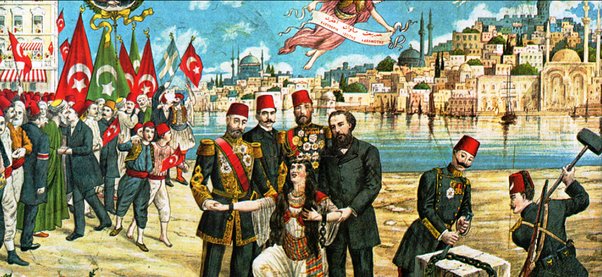By Appo Jabarian
Executive Publisher / Managing Editor
USA Armenian Life Magazine
Friday, June 19, 2009
The 2009 Lebanese parliamentary elections are over.
But the problem caused by the 2005 election which defrauded the majority of the Armenian Lebanese of their right for true representation still lingers.
The disastrous policy that is still haunting the Armenian Lebanese community began in 2000 when the government of the late Prime Minister Rafik Hariri changed the established parliamentary election laws, and stripped the Armenian Lebanese majority (75%) of its right to directly elect its representatives.
During the ’09 election, the hijacking of the four out of six Armenian seats in the parliament from the Armenian Lebanese majority by Mr. Hariri’s Sunni voters in Zahlé, Beirut I, Beirut II, and Beirut III districts, has raised several eyebrows in Lebanon and around the world.
The four Hariri-controlled seats are filled by Armenian individuals that were hand-picked by Hariri’s son Saad. These individuals received only 15%-20% of the Armenian Lebanese votes in their respective districts, yet they were able to get “elected.”
How is this possible?
As a result of adverse redistricting, the number of the Armenian Lebanese voters inside those districts was dwarfed by the huge number of Sunni Lebanese voters.
During the 1970’s, the most popular Armenian Lebanese Tashnag party (with over 75% of the Armenian Lebanese votes), reached out to the minority Armenian Lebanese groupings by including a Ramgavar and a Hunchak candidate in its party list thus fostering the formation of the traditional Armenian Lebanese Parliamentary Bloc.
The 2008 Doha agreement that ended Sunni-Shiite conflict in Beirut, only partially re-instated the Armenian Lebanese majority’s right to true representation.
For some odd reason, the Doha agreement placed three Armenian Lebanese parliamentary seats in Beirut’s districts where a limited number of Armenian-Lebanese voters reside.
In these districts, they were clearly outnumbered by the Sunni Lebanese and non-Armenian Christian Lebanese voters.
In order to re-establish a truly representative government, the seats allocated for each community should be based on demographics. Seats should be allocated to districts where the majority of the members of that particular community permanently reside. In the case of Armenian Lebanese, that district would be Metn (Matn).
The incoming parliament should facilitate that move in order to help preserve each community’s right to true representation. The Armenian-Lebanese community must study the legal options that are available in the Lebanese Judicial System and its Constitutional Council.
No democracy is perfect. There is always room for improvements. By constantly fine-tuning its communal democracy, Lebanon can continue to maintain its position as the bastion of democracy in the entire Middle East.
Lebanon: Communal and Parliamentary Democracy
Recently, a Western political commentator criticized and ridiculed the Lebanese form of democracy.
He has mistakenly compared the American form of democracy with the Lebanese form of democracy, and has deemed the American model superior.
In my opinion, they cannot be compared. The make-up of the American and the Lebanese populations is different. The population of the United States consists of over one hundred ethnic groups, speaking over 144 languages. Lebanon’s population is made up of only ten major ethnic communities, speaking mostly four languages – Arabic, English, French and Armenian.
Nearly 95% of the Lebanese citizens are composed mostly by the following communities: The Maronite Catholic Christians, Greek Orthodox Christians, Greek Catholic Christians, Armenian Apostolic Christians, Armenian Catholic Christians, other minority Christians; Sunni Muslims, Shiite Muslims, Druze, other minority Muslims. The remaining 5% are made up with various Christian and Muslim minorities.
During the Lebanese civil war (1975-1989), the Lebanese people still felt relatively safe in their respective neighborhoods. Had there been a civil war in the United States it is highly doubtful that the same level of relative comfort would be the norm for the ethnically diverse American populace.
The 128-seat parliament is divided equally between Christian Lebanese and Muslim Lebanese, and subdivided among the largest of the country’s recognized 10 ethnic/religious groups.
On the Christian side, Maronite Catholic Lebanese get 34 seats, Greek Orthodox Lebanese 14, Greek Catholic Lebanese eight, Armenian Orthodox Lebanese five, Armenian Catholic Lebanese one, Protestant Lebanese one and another one for “minorities.” On the Muslim side, Sunni Lebanese and Shiite Lebanese each get 27 seats, the Druze Lebanese eight and the Alawite Lebanese two.
The reason that the Communal Democracy is just right for Lebanon is because Lebanon is diverse with limited number of communities.
So the best way to describe Lebanon’s unique form of democracy would be Communal and Parliamentary Democracy. 1) Communal, in the sense that every four years, each community is free to directly elect its representatives; 2) Parliamentary, in the sense that the country’s members of the parliament are the designated electors of the country’s President, which, according to “al-myssaq al-watani” (The National Pact), should be a Maronite. According to the same agreement, the country’s Prime Minister must be a Sunni, and the Speaker of the Parliament, a Shiite.
What democratic system is good for the United States or the West may not be successfully applicable to other unique democracies such as Lebanon.
Lebanon’s communal democracy lives on. And that’s the way Lebanon has been since its independence nearly seven decades ago. It looks like it will continue to function as long as the country’s leadership practices the open door policy in its intra-national relations.
Aside from short-changing the Armenian-Lebanese community of its right to true representation, the ’09 Lebanese Parliament is the most pluralistic elected body so far. Even the tiniest minorities are somehow represented.


Leave a Reply